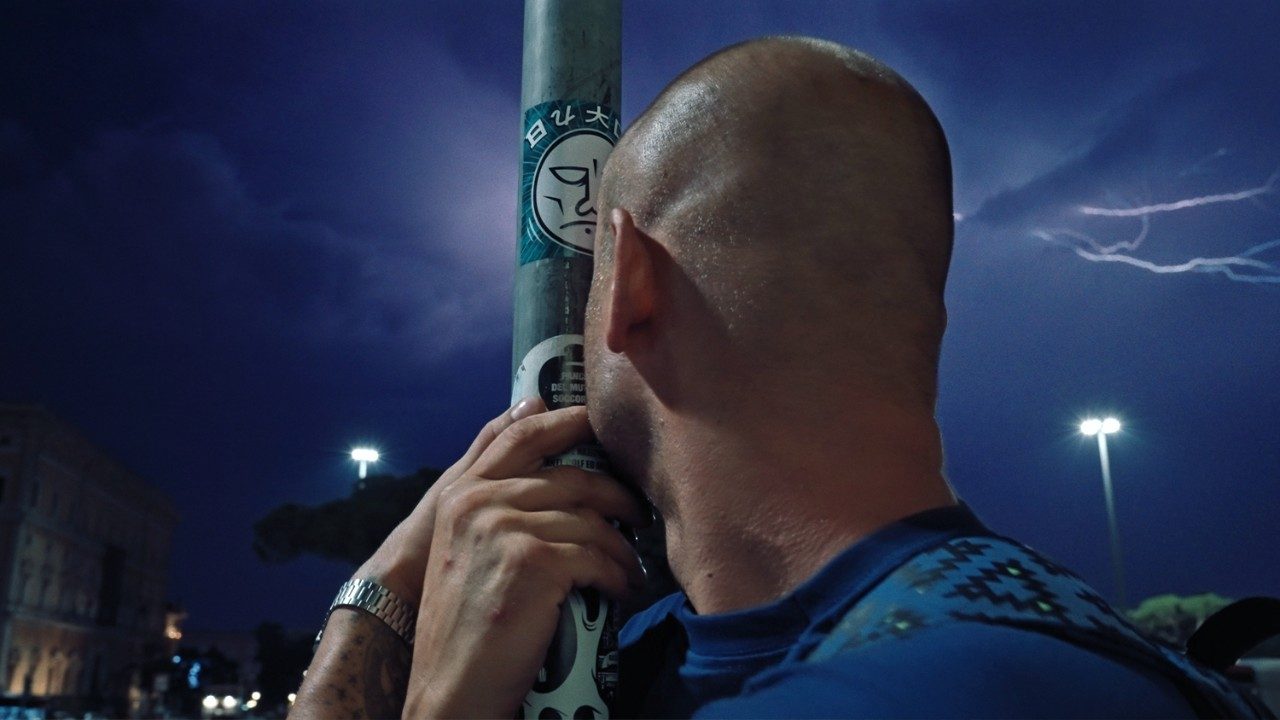The Vatican screens the documentary ‘San Damiano’, which tells the story of a young Polish man who, with fifty euros in his pocket, flees his past and arrives in Rome, living among the homeless near the central train station.
By Eugenio Murrali
Was it a chance meeting? One evening, after a year spent volunteering with the Sant’Egidio community and distributing meals to the homeless, filmmakers Gregorio Sassoli and Alejandro Cifuentes decided to spend the night at Rome’s Termini train station, home to a large homeless community.
While there, they were approached by Damian, a young Polish man with a curious accent from Calabria, in the south of Italy. He broke the ice with a joke, then made a surprising revelation. Unlike others sleeping rough, he had found shelter on one of the towers of Rome’s Aurelian Walls.
That encounter became the spark for the documentary screened this evening, October 2, at the Vatican Film Library.
Damian in a scene from the documentary
Two years in the “hell” of Termini
“Fascinated by his charisma and contagious energy, we began a journey into [Damian’s] life,” the directors recalled. Over two years—one spent filming—they immersed themselves in the raw reality of street life: alcoholism, the daily struggle to survive, and the fragile networks that sustain those on the margins.
It wasn’t easy. They were met at first with suspicion—and more than once with flying bottles—but over time, hostility gave way to trust, even affection. The people living around Termini came to understand that Sassoli and Cifuentes weren’t there to exploit their stories, but produce “a film that does not merely observe from the outside, but offers an inside perspective”, thanks to the deep bonds that they forged over time.
Gregorio Sassoli and Alejandro Cifuentes, the film’s directors
Learning to really look
“This film,” said Paolo Ruffini, Prefect of the Vatican’s Dicastery for Communication in his opening remarks, “tells one of those stories we don’t see—even though we walk past them every day.”
Ruffini emphasized the importance of sharing these stories and learning to see again, together.
According to Msgr. Davide Milani, President of the Fondazione Ente dello Spettacolo, the film holds great educational value. “It’s not didactic,” he said, “yet it teaches us to look at reality.” San Damiano challenges viewers to step outside the comfort zones and biases they use to shield ourselves. “Every person we meet is a human being,” said Milani, “and demands the effort of discovery”—just like this film, which “tells the truth without taming it.”
The event, moderated by Cinematografo critic Federico Pontiggia, also featured Giuseppe Dardes from the Italian Federation of Homeless Organizations.
The film is introduced
The neighbour we don’t see
The journey San Damiano proposes mirrors the one taken by its filmmakers: from indifference to awareness.
“At one time,” the directors admit, “we were among those who looked away, suppressing the discomfort of seeing someone living in such extreme conditions.”
Everyone passes through Termini, over 150 million people every year, but most only glimpse the world of the homeless who inhabit it. Thus, through San Damiano, those who were invisible become present in our thoughts, “through a raw and authentic story that invites us to reflect on our commonality and our need to see and listen”.
In San Damiano, the invisible become visible. The film offers a raw, unfiltered vision that challenges us to reflect on our common bonds, and on the urgent need to truly see and hear those we so often ignore.
Damian’s tower
Today, Damian is in a psychiatric hospital in Poland. But Sassoli and Cifuentes still speak to him by phone every Sunday.
An unconventional artist and singer, Damian refuses to conform. When a musician once suggested he adopt a more commercial style, he replied, with a smile, “I’m not a commercialist.”
That energy, that luminous defiance, that refusal to settle for mere survival—his impulse to create, to dream—was his own kind of sanctity.
In fact, it was Damian himself who suggested the title of the documentary. The tower where he once lived was more than just a refuge—it was a metaphor for his yearning to be seen, for his insistence on being recognized in all his complexity and contradiction, without compromise.
On 10 October, to mark World Mental Health Day, the documentary (which first appeared in 2024) will return to 40 cinemas across Italy, with a discussion at the Don Bosco cinema in Rome.




